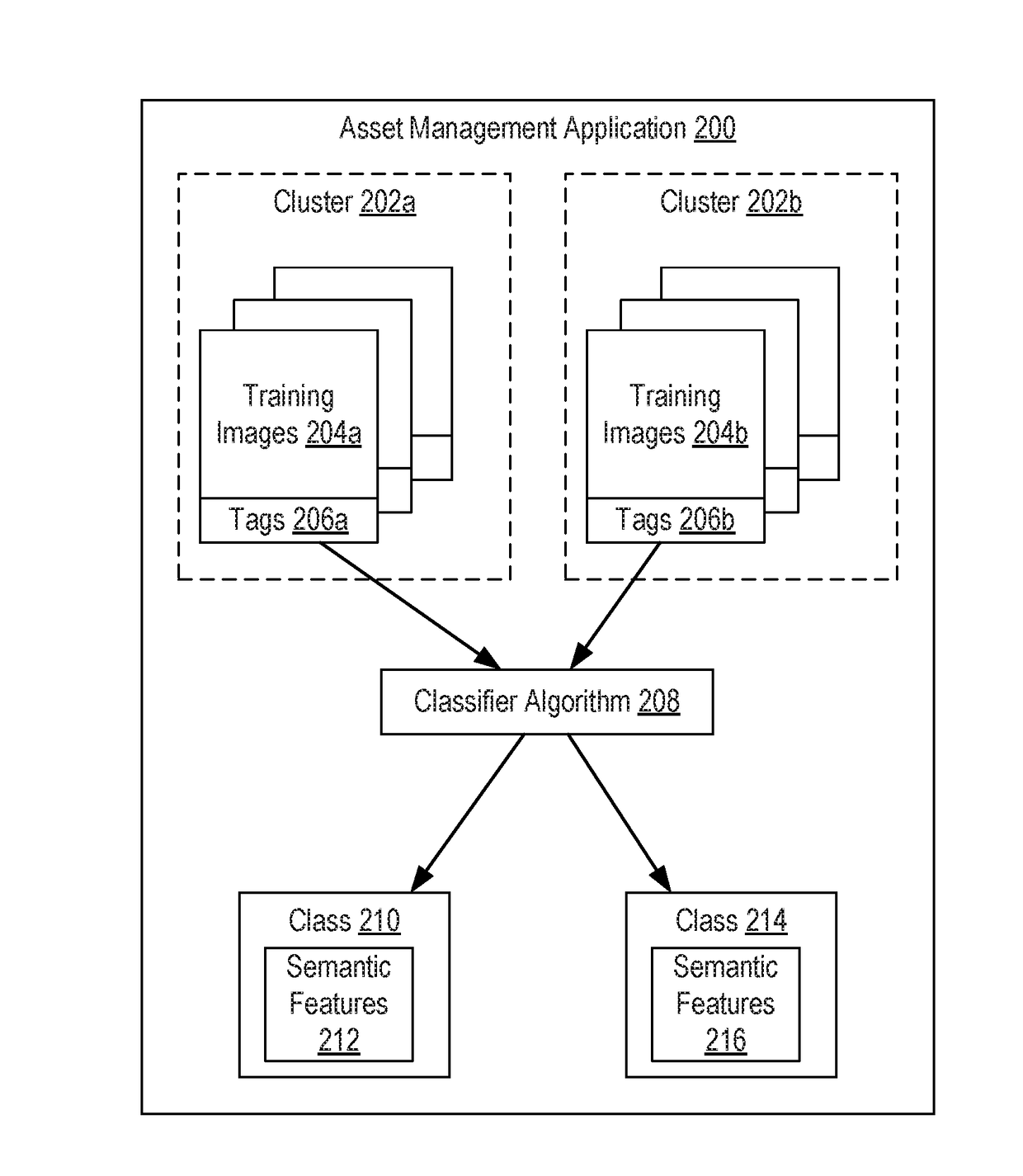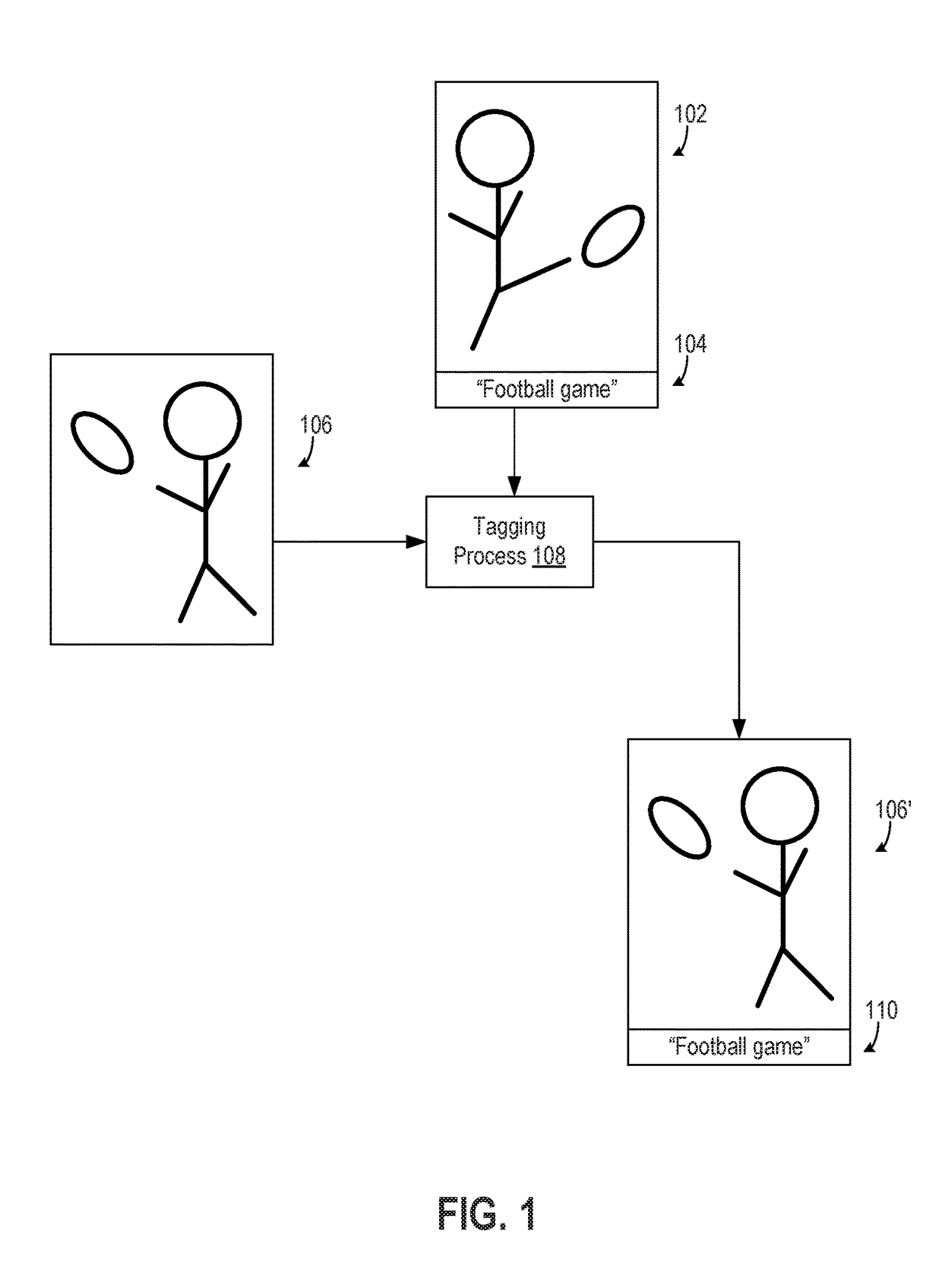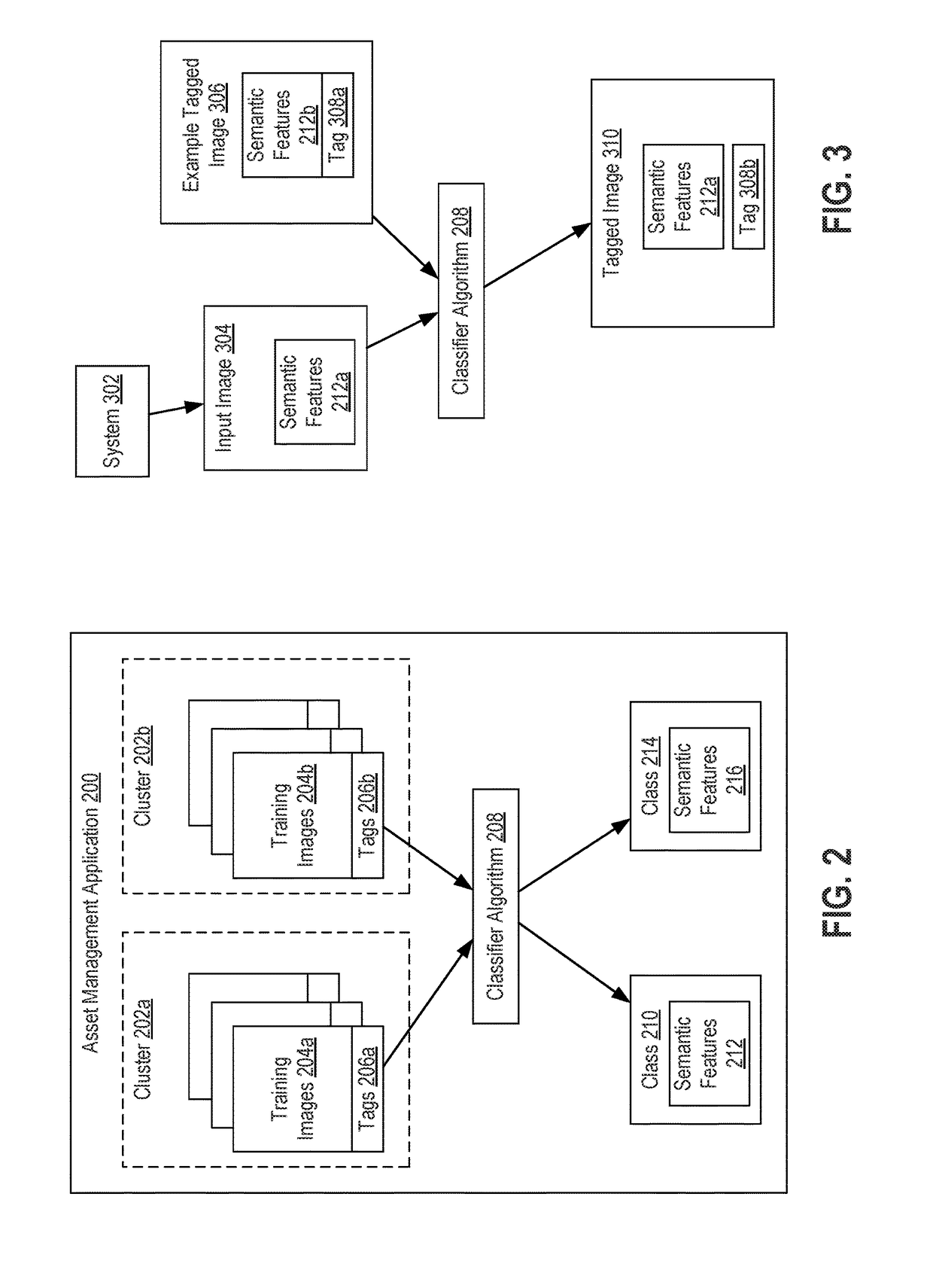Training a classifier algorithm used for automatically generating tags to be applied to images
a classifier algorithm and image technology, applied in the field of computerimplemented methods and systems, can solve the problems of reducing the processing resources required, affecting the accuracy of classifier algorithms, and unable to properly classify certain types of semantic content, etc., and achieve the effect of reducing processing resources
- Summary
- Abstract
- Description
- Claims
- Application Information
AI Technical Summary
Benefits of technology
Problems solved by technology
Method used
Image
Examples
Embodiment Construction
[0022]Embodiments are disclosed for training classifier algorithms that are used for automatically selecting tags to be applied to an input image. These embodiments involve dividing set of training images into groups based on the grouped training images having similar tags, then training a classifier algorithm to identify the training images in each group as being semantically similar to one another. These embodiments can allow a classifier algorithm to be trained using large sets of tagged training images and large numbers of tags even if a computing system that executes the classifier algorithm has limited processing resources. After training the classifier algorithm that certain sets of semantic features should be used to match semantically similar images to one another, the trained classifier algorithm can match untagged input images to semantically similar tagged images. The tags of the tagged images can be used to generate tags for the input image.
[0023]In previous solutions, ...
PUM
 Login to View More
Login to View More Abstract
Description
Claims
Application Information
 Login to View More
Login to View More - R&D
- Intellectual Property
- Life Sciences
- Materials
- Tech Scout
- Unparalleled Data Quality
- Higher Quality Content
- 60% Fewer Hallucinations
Browse by: Latest US Patents, China's latest patents, Technical Efficacy Thesaurus, Application Domain, Technology Topic, Popular Technical Reports.
© 2025 PatSnap. All rights reserved.Legal|Privacy policy|Modern Slavery Act Transparency Statement|Sitemap|About US| Contact US: help@patsnap.com



